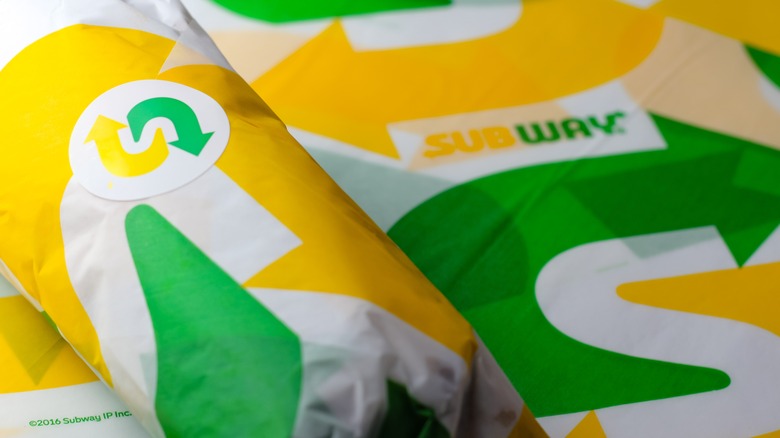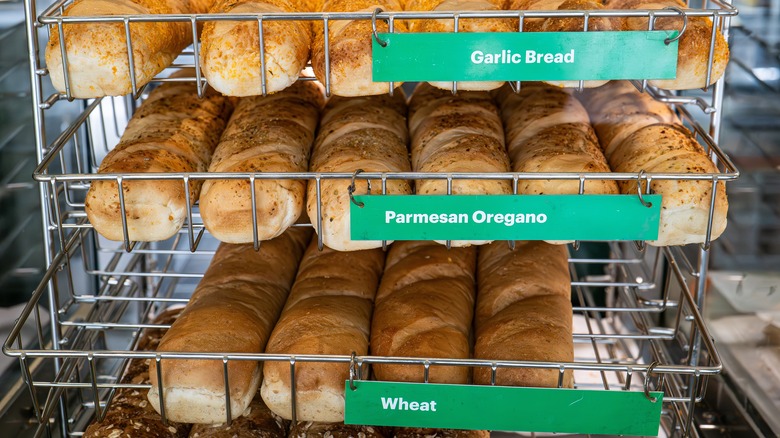The Chemical Subway Once Used In Its Bread
Started in 1965, Subway has grown into one of the most successful fast-food chains in the U.S. Over the many years, Subway has had its fair share of ups and downs, as well as moments of controversy. In the last several years, Subway's ingredients in its tuna sandwich came under scrutiny, and in 2020, Subway was embroiled in a controversy in Ireland over its bread.
Given the importance of bread to a sandwich chain, it's unfortunate that Subway's has come under fire, and the company's troubles date farther back than the Ireland incident. Up until 2014, Subway's bread used to include a chemical that acted as a dough conditioner. But this chemical is also the same chemical used to make yoga mats. Fortunately, the chain has since ended its use of the chemical in its bread. Still, by the time it was removed, the reputational damage had already been done.
What exactly is dough conditioner?
The so-called dough conditioner's real name is azodicarbonamide. The ingredient wasn't entirely a secret either; in fact, Subway listed the chemical as one of the ingredients in some of its available breads. Still, the name does not exactly indicate what the chemical is or what it is used for.
Typically, azodicarbonamide is used in the production of plastics and rubber items, like shoe soles, flip-flops, and foam insulation. This chemical is what gives many of these products elasticity. It works well, hence its common use in many products. However, it is not exactly something you want to be consuming; after all, azodicarbonamide is one of the foods banned in Europe.
Despite Subway's claim that the chemical is perfectly safe for consumption, the Center for Science in the Public Interest believes it "has been poorly tested" (via CNN.com). Subway is certainly not the only restaurant to use this dough conditioner in its food, but thankfully, the sandwich chain discontinued its use of the chemical in 2014 and has not returned to using it since.

